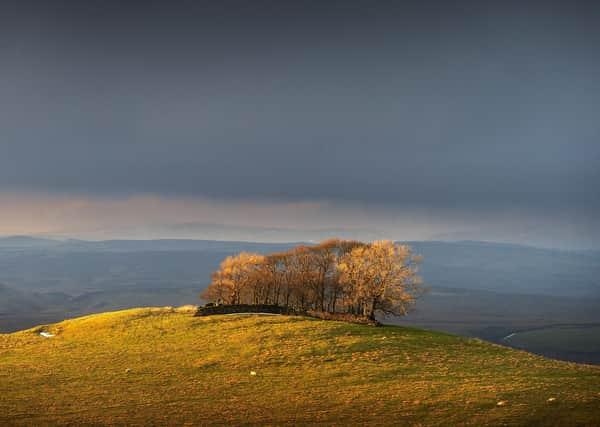The Cracoe Reef Knoll - a Yorkshire scene millions of years in the making


But it is the land upon which it sits that has the most fascinating story of the period in time millions of years ago when much of what we now call Yorkshire was partially under water.
It is part of the Cracoe Reef Knoll, a series of conical hills lying along the side of the valley running from Grassington towards Skipton.
Advertisement
Hide AdAdvertisement
Hide AdAs the Yorkshire Dales National Park Authority website explains, the hills are remnants of an ancient coral reef.
“These hills are the remains of ancient reef knolls and were once colonies of coral and algae lying in shallow tropical seas over 300 million years ago,” it says.
“Their fossilised remains have become the limestone that makes the soil so rich.”
In a recent blog post on his website, Tim Barber, of Real Yorkshire Tours, wrote: “In Cracoe the knolls include Thorpe Kail, Elboton, Myrah Bank Stebden, Skelerton and Butter Haw hills and in Malham the Reef Knolls include Cawden, which can be seen from the village as well as Wedber & Burns Hill.”
Advertisement
Hide AdAdvertisement
Hide AdOn Elbolton Hill, its bright green grass – caused by the rich limestone under the ground – contrasts strongly with the brown moorland behind. That contrast has led to magical myths about the fairies of Elbolton, who led unwary travellers astray on foggy nights with “corpsie lights”.
Elbolton also has a cave system which was excavated around 100 years ago.
Archaeologists found prehistoric skeletons and pottery, now in collections at Craven Museum in Skipton.
The Yorkshire Dales are blessed with several sets of reef knolls, including one set located around Malham and another around Settle but they are not unique to this part of the country.
Advertisement
Hide AdAdvertisement
Hide AdOther examples can be found on the Derbyshire/Staffordshire border.
The hills are a source of great interest to geologists and fossil hunters – and offer a reminder of how life has changed on the planet over millennia.
Technical details: Nikon D4, 80-200mm Nikkor lens, 1/640th second @ f5.6, ISO400.
Support The Yorkshire Post and become a subscriber today. Your subscription will help us to continue to bring quality news to the people of Yorkshire. In return, you’ll see fewer ads on site, get free access to our app and receive exclusive members-only offers. Click here to subscribe.
Comment Guidelines
National World encourages reader discussion on our stories. User feedback, insights and back-and-forth exchanges add a rich layer of context to reporting. Please review our Community Guidelines before commenting.